
Deutsch-Chinesische Enzyklopädie, 德汉百科
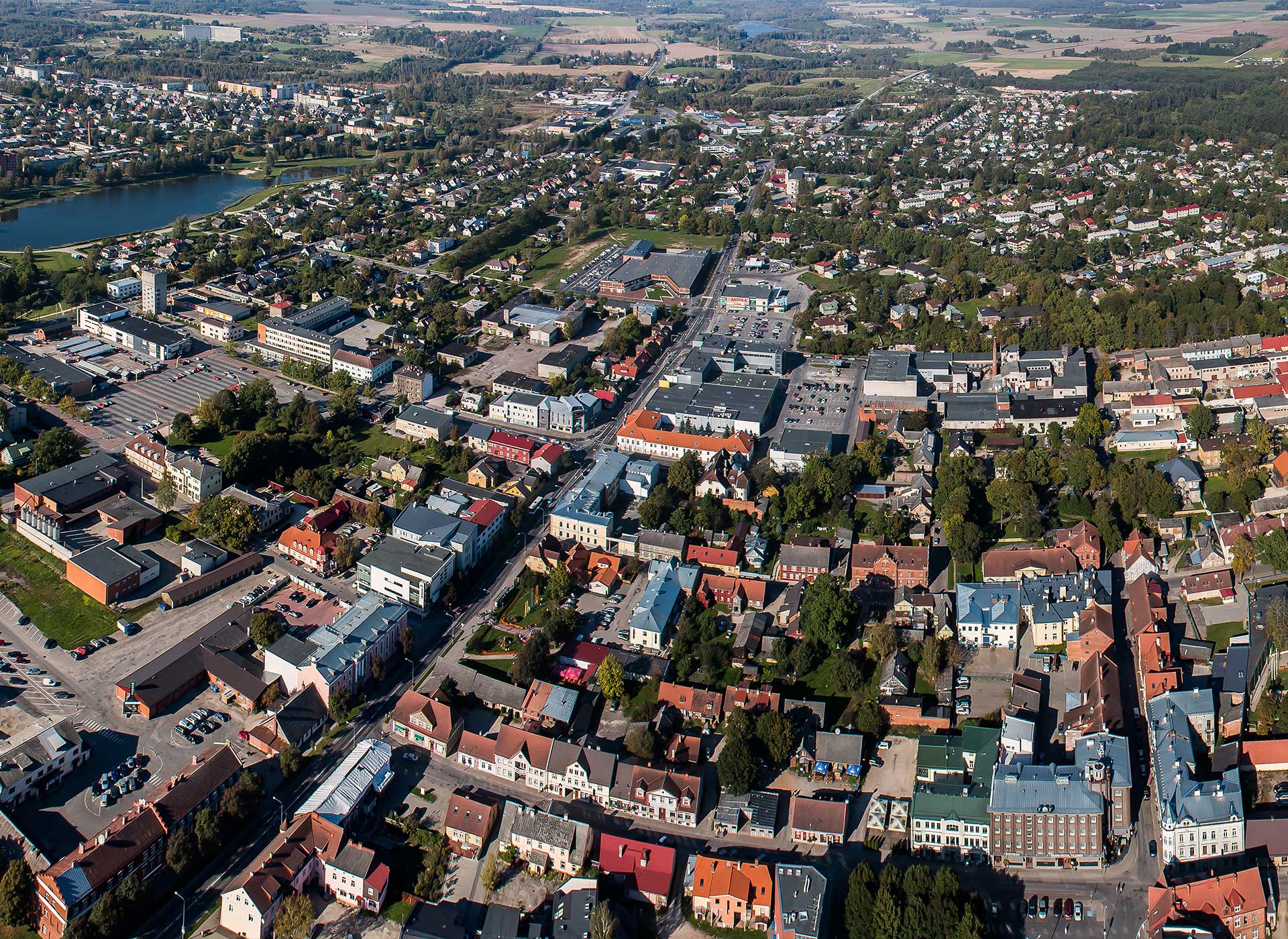


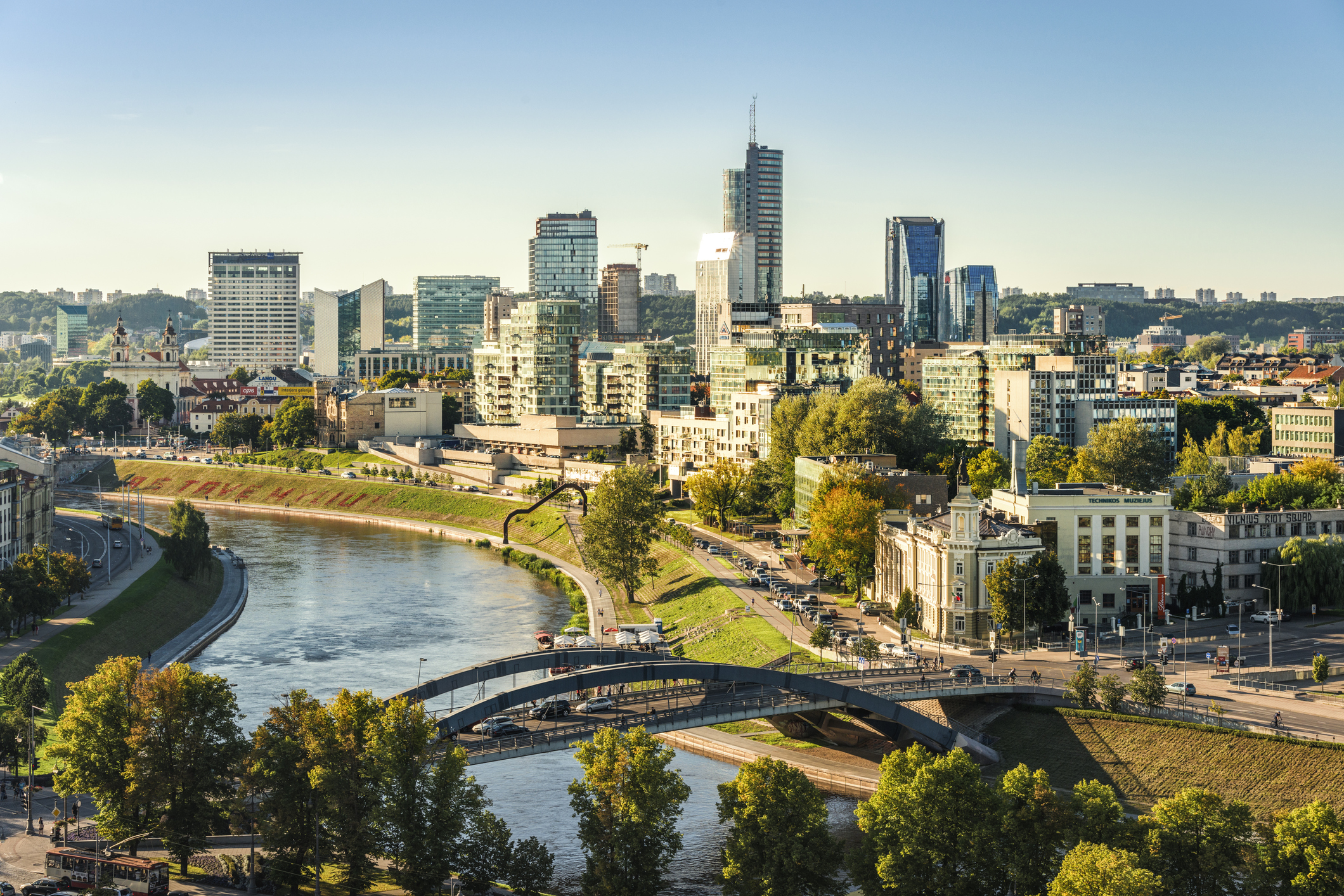
Vilnius [ˈvʲɪlʲɲʊs] , deutsch Wilna (polnisch Wilno, russisch Вильнюс Wilnjus, weißrussisch Вільня Wilnja, jiddisch ווילנע Wilne), ist die Hauptstadt Litauens. Mit 574.221 angemeldeten Einwohnern (2017) ist Vilnius die größte Stadt des Landes und flächenmäßig die größte Stadt des Baltikums. Sie gehört der Stadtgemeinde Vilnius an und ist mit der VMSA-Verwaltung auch deren administrativer Sitz.
Vilnius ist Sitz des katholischen Erzbistums Vilnius und mit der 1579 gegründeten Universität Vilnius eine der ältesten Universitätsstädte Europas. Sie trug 2009 gemeinsam mit der Stadt Linz den Titel Kulturhauptstadt Europas.
Vilnius war von Anfang an eine baltische Gründung und wurde im Gegensatz zu den Hauptstädten der baltischen Nachbarländer, Riga in Lettland und Tallinn in Estland, nie vom Deutschen Orden kontrolliert. Sie entwickelte sich als Hauptstadt Litauens zum Zentrum eines ausgedehnten Großreiches, das auf dem Höhepunkt seiner Macht um 1618 als Polen-Litauen zeitweise von der Ostsee bis zum Schwarzen Meer reichte.
Vilnius galt seit seiner Gründung als eine der liberalsten Städte Europas, die im Lauf ihrer Geschichte u. a. den verfolgten Juden aus Mitteleuropa und Russland Schutz bot. Als „Jerusalem des Nordens“ wurde Vilnius zum Zentrum der jüdischen Kultur und Aufklärung. Um 1900 stellten Litauer nur einen kleinen Teil der Bevölkerung (2 %), nach Juden (40 %), Polen (30 %) und Russen (20 %). Infolge des Zweiten Weltkrieges verlor die Stadt die Mehrheit ihrer Bewohner (Polen wurden vertrieben und Juden flüchteten oder wurden im Holocaust ermordet) und wurde danach von Litauern und Russen praktisch neu besiedelt. Damit hat sich die soziale Struktur von Vilnius völlig verändert.
Ab dem 16. Jahrhundert schufen italienische Baumeister zahlreiche barocke Bauwerke in der Stadt. Die Altstadt von Vilnius zählt zu den größten in Osteuropa und wurde 1994 zum UNESCO-Welterbe erklärt.[1] Aufgrund der über 50 Kirchen der Stadt trägt Vilnius auch den Beinamen „Rom des Ostens“.
ヴィリニュス(リトアニア語: Vilnius -発音: [ˈvʲɪlʲnʲʊs] (![]() 音声ファイル))は、リトアニア共和国の首都で、同国最大の都市である。人口は 558,165 人(2009年現在)。かつてポーランド領だったこともある。バルト三国で唯一海に面していない首都で、バルト海に面したリトアニア主要港のクライペダからは 312 km離れている。
音声ファイル))は、リトアニア共和国の首都で、同国最大の都市である。人口は 558,165 人(2009年現在)。かつてポーランド領だったこともある。バルト三国で唯一海に面していない首都で、バルト海に面したリトアニア主要港のクライペダからは 312 km離れている。
ヴィリニュスは、ヴィルネ川・ネリス川沿いに位置し、リトアニアの南東と地理的に偏ったところにある。これは過去数世紀の間に国境の形が変わっていったことと関係している。かつてリトアニア大公国の時代にヴィリニュスは国土の中央にあった。
1994年に旧市街はユネスコの世界遺産(文化遺産)に登録された。また、2009年には欧州文化首都に選ばれたこともある。
Vilnius (Lithuanian pronunciation: [ˈvʲɪlʲnʲʊs] (![]() listen), see also other names) is the capital of Lithuania and its largest city, with a population of 574,147 as of 2018.[9] Vilnius is in the southeast part of Lithuania and is the second largest city in the Baltic states. Vilnius is the seat of the main government institutions of Lithuania and the Vilnius District Municipality. Vilnius is classified as a Gamma global city according to GaWC studies, and is known for the architecture in its Old Town, declared a UNESCO World Heritage Site in 1994.[10] Before World War II, Vilnius was one of the largest Jewish centres in Europe. Its Jewish influence has led to it being described as the "Jerusalem of Lithuania" and Napoleon named it "the Jerusalem of the North"[11] as he was passing through in 1812. In 2009, Vilnius was the European Capital of Culture, together with the Austrian city of Linz.[12]
listen), see also other names) is the capital of Lithuania and its largest city, with a population of 574,147 as of 2018.[9] Vilnius is in the southeast part of Lithuania and is the second largest city in the Baltic states. Vilnius is the seat of the main government institutions of Lithuania and the Vilnius District Municipality. Vilnius is classified as a Gamma global city according to GaWC studies, and is known for the architecture in its Old Town, declared a UNESCO World Heritage Site in 1994.[10] Before World War II, Vilnius was one of the largest Jewish centres in Europe. Its Jewish influence has led to it being described as the "Jerusalem of Lithuania" and Napoleon named it "the Jerusalem of the North"[11] as he was passing through in 1812. In 2009, Vilnius was the European Capital of Culture, together with the Austrian city of Linz.[12]
Vilnius (en lituanien : Vilnius Écouter ; allemand, Wilna ; polonais, Wilno ; russe, Вильнюс/Wilnjus, Вильна/Wilna ; biélorusse, Вільня/Wilnja ; yiddish, ווילנע/Wilne), anciennement Vilna, fondée par le grand-duc Gediminas, est la capitale de la Lituanie. Avec plus de 500 000 habitants, c'est la ville la plus peuplée du pays.
Vilnius fut, en 2009, l'une des deux capitales européennes de la culture avec Linz (Autriche).
D'un point de vue architectural, le centre historique de Vilnius a eu la chance d'être épargné par deux guerres mondiales, et il est intégralement classé au patrimoine mondial de l'UNESCO, notamment le quartier des ambassades avec ses façades typiques des pays du Nord de l'Europe, plutôt colorées et, souvent ornées de sculptures. La ville est dominée par une superbe tour en briques aisément visible car située sur une colline surplombant la ville. Près de celle-ci se trouve le cimetière polonais na Rossie, où se trouve le cœur du maréchal Józef Piłsudski qui gouverna la Pologne de l'entre-deux-guerres (son corps est enterré à Cracovie).
Après avoir connu l'économie d'État durant un demi-siècle, Vilnius a retrouvé depuis 1992 l'économie de marché, d'où les édifices de verre et d'acier en construction dont la modernité contraste avec les antiques trolleybus et avec les barres d'habitation de béton gris de la banlieue, qui datent de l'époque soviétique et tranchent sur le paysage verdoyant des campagnes environnantes. Néanmoins, il existe toujours des maisons traditionnelles dans ces zones : elles gardent souvent leur aspect originel, faute de moyens de leurs propriétaires pour les rénover.
Vilnius (; in russo: Вильнюс?, Vil'njus oppure Вильна, Vil'na; in polacco Wilno; in tedesco Wilna; in yiddish ווילנע, Wilne, nota in italiano anche come Vilna[2]) è la capitale e la città più popolosa della Lituania, capoluogo dell'omonima contea. Vanta un centro storico barocco (Užupis) tra i più estesi e meglio conservati d'Europa, dichiarato patrimonio dell'umanità dell'UNESCO.
Vilna1 (en lituano: Vilnius ![]() [ˈvʲɪlʲnʲʊs] (?·i), en polaco: Wilno, en ruso: Вильнюс o Вильно, entre 1919 y 1939 Вильна) es la capital y ciudad más poblada de Lituania, situada en la provincia homónima. Cuenta con 554 060 habitantes (838 852 con la provincia de Vilna).
[ˈvʲɪlʲnʲʊs] (?·i), en polaco: Wilno, en ruso: Вильнюс o Вильно, entre 1919 y 1939 Вильна) es la capital y ciudad más poblada de Lituania, situada en la provincia homónima. Cuenta con 554 060 habitantes (838 852 con la provincia de Vilna).
La ciudad se encuentra al sureste del país, a unos 30 km de la frontera con Bielorrusia, en la unión de los ríos Vilnia y Neris. Es la segunda ciudad en cuanto a población de los países bálticos, después de Riga. Administrativamente, es sede del municipio de Vilna y del distrito de Vilna. Es también la capital de la provincia de Vilna. Además de ser la capital y ciudad más poblada, Vilna es de importancia en cuanto a los medios de comunicación nacionales, el arte, la moda, las industrias de investigación, tecnología, educación y entretenimiento. En 2018 Vilna se destaca por una creciente industria tecnológica y emprendedora, con un gran número de nuevas empresas dedicadas a las tecnologías de información.
La primera mención escrita de Vilna data de 1323 en cartas del rey Gediminas. Su centro histórico o "casco antiguo", uno de los mayores y mejor conservados barrios medievales de la Europa del Este, fue considerado como Patrimonio de la Humanidad por la Unesco en 1994. En 2009 fue Capital Europea de la Cultura, título compartido con la ciudad austriaca de Linz.



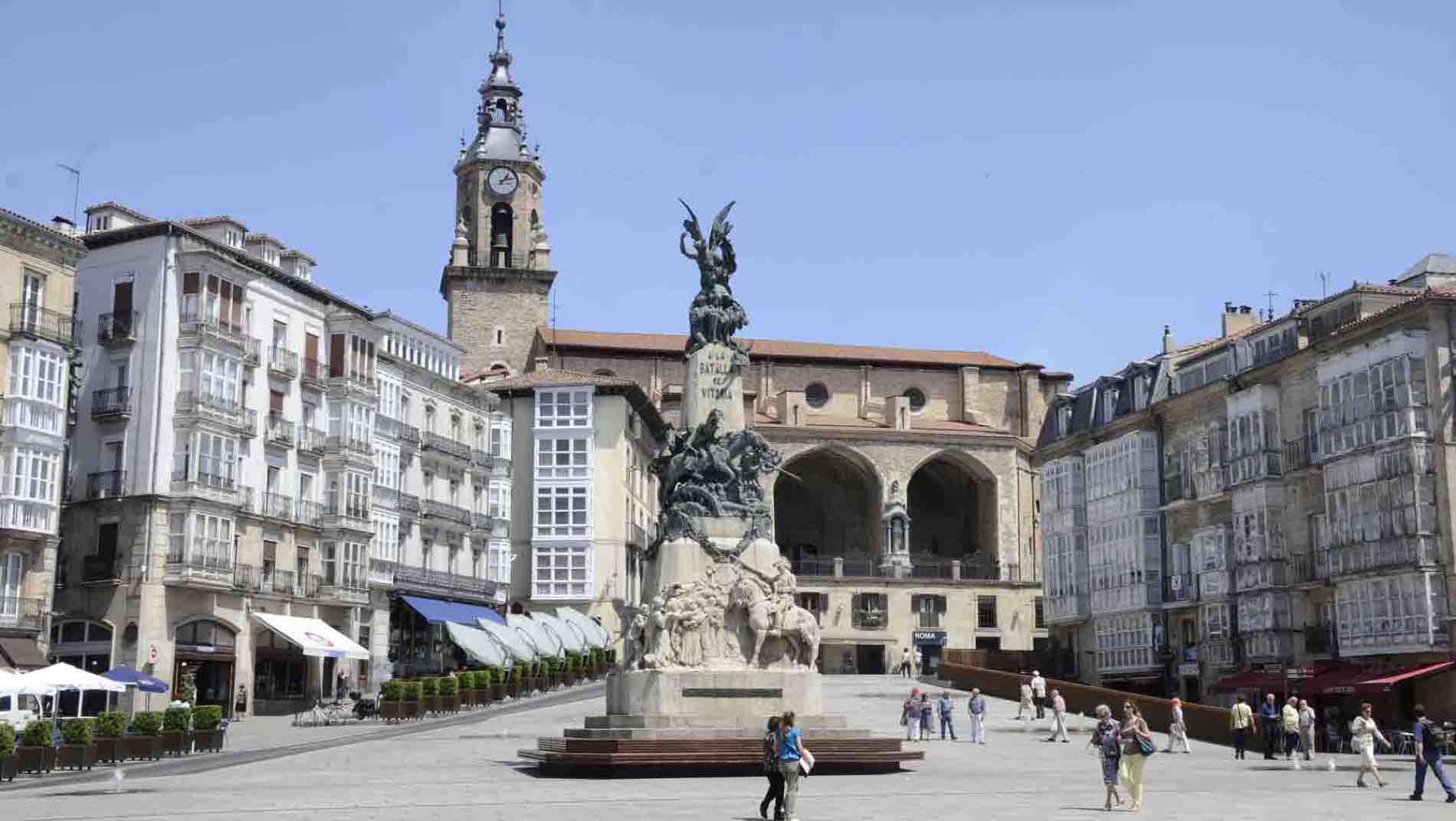
维多利亚巴斯克自治区首都,位于四面环山的平原上,距离海滩60公里,距离葡萄园和拉里奥哈自治区古老酒窖30公里,距离西班牙语创始地50公里 。50年前,仅60.000 人口,短短数年内增长到230.000人口,大部分的因数为她充满活力的现代化工业发展,吸引着开发商,以及西班牙其他城市的居民前来定居。现在她还在一迅猛的速度持续发展。
维多利亚距离马德里351公里,距离毕尔巴鄂66公里,距离圣塞瓦斯蒂安110公里,距离步尔戈斯112公里,距离蟠普洛纳90公里。 以上城市以及萨拉戈萨,巴塞罗那皆可通过高速公路由汽车,火车或飞机抵达。(与马德里与和巴塞罗有固定航班)从伦敦和柏林皆有固定航班飞往维多利亚。(Quelle:http://www.zadorspain.com)


华沙(波兰语:Warszawa [varˈʂava] ![]() 试听)是波兰首都及最大城市,位于维斯拉河两岸,距波罗的海和喀尔巴阡山脉大约350公里。2008年人口数字为1,707,983人,都市圈人口大约2,785,000人。城市面积512平方公里,都市圈面积12266平方公里。冷战时期著名的华沙公约就是于此签署的。
试听)是波兰首都及最大城市,位于维斯拉河两岸,距波罗的海和喀尔巴阡山脉大约350公里。2008年人口数字为1,707,983人,都市圈人口大约2,785,000人。城市面积512平方公里,都市圈面积12266平方公里。冷战时期著名的华沙公约就是于此签署的。
该市也是马佐夫舍省的省会,拥有许多工业企业(制造、钢铁、电气工程、自动工业),66所高等学府(包括华沙大学),和超过30家剧院。
第二次世界大战时期的1944年8月,十八世纪的历史名城-华沙,在纳粹德国占领军的空袭下,百分之八十五的历史建筑遭到毁灭。二战之后,华沙人民用长达五年的时间重建家园,他们修建了教堂、宫殿和贸易场所。华沙的重生是十三至二十世纪建筑史上的不可抹灭的一笔。
波兰的首都华沙建立于公元13世纪,位于欧洲北部平原心脏地带,地势为维斯图拉河岸边水土丰饶的斜坡地,沿克拉科夫下游的城市横跨维斯图拉河两岸。历史上一直是政治、行政中心,现为国家首都和主要省会城市。
1280年马佐瓦亚公爵建立华沙,修建城堡以控制维斯图拉河渡口,这是华沙城开始发展的标志。1344年华沙成为马佐瓦亚公国首都。15世纪,历任公 爵在华沙修建了自己的住宅,随着城市功能的迅速完善,华沙的政治地位也越发显赫。1596年,波兰王城从克拉科夫迁移至华沙古城,从此华沙成为波兰的政治 文化中心。城市大兴土木,华沙即刻兴盛起来。1656和1702年华沙两次被瑞典人摧毁,又两度重建。18世纪末华沙成为欧洲最大的城市。
二次大战末期,华沙举行反纳粹占领者起义,起义总指挥部设在古城。起义失败后,希特勒下令把华沙从地球上抹掉。古城90%被毁。战后,人们急切地展开了重建工作。到1966年,所有旧城的纪念建筑都依照14至18世纪原样重新修建。
华沙文化中心靠近维斯图拉河岸,城市围绕着集市广场发展起来,主要特点是街道按照方格网状进行布局规划。随着街道从市中心向外延伸,这种布局的规范性逐渐消失。宽阔的广场提供了广大深远的视野。
16-18世纪的建筑物外墙为华沙提供了一种赏心悦目的景色,装饰着壁画和石门的房屋沿市场一直延展开去。广场附近另一排房屋正面建造了装饰性的拱顶 和游廊。老城边上靠近城堡的地方,一连片色彩艳丽的住房与整个城市和谐地融为一体。俯瞰全城的皇宫旁另有一些纪念建筑成为重建后华沙的点缀,这些建筑具有 哥特式、文艺复兴式和巴洛克等各种风格。靠近城堡并沿维斯图拉河生长的绿林将老城环绕起来。
(Quelle: www.guwh.com)
Warschau (polnisch Warszawa [varˈʃava] ) ist seit 1596 die Hauptstadt Polens[2] und die flächenmäßig größte sowie mit über 1,7 Mio. Einwohnern bevölkerungsreichste[3] Stadt des Landes. Als eines der wichtigsten Verkehrs-, Wirtschafts- und Handelszentren Mittel- und Osteuropas genießt Warschau große politische und kulturelle Bedeutung. In der Stadt befinden sich zahlreiche Institutionen, Universitäten, Theater, Museen und Baudenkmäler.
Beidseitig am Strom der Weichsel (pln. Wisła) in der Woiwodschaft Masowien gelegen, stellt sie das Zentrum der zweitgrößten Agglomeration Polens mit rund 3,5 Mio. Einwohnern dar. Ihr Stadtgebiet gliedert sich in 18 Stadtbezirke, unter denen Śródmieście (Stadtmitte) die Innenstadt ausmacht und das UNESCO-Welterbe der wiederaufgebauten Warschauer Altstadt beherbergt.
ワルシャワ(Warszawa![]() [varˈʂava];ヴァルシャヴァ、英: Warsaw、ワルソー[ˈwɔːrsɔː])は、ポーランドの首都でかつ同国最大の都市。マゾフシェ県の県都。ポーランドの政治、経済、交通の要衝でもある。
[varˈʂava];ヴァルシャヴァ、英: Warsaw、ワルソー[ˈwɔːrsɔː])は、ポーランドの首都でかつ同国最大の都市。マゾフシェ県の県都。ポーランドの政治、経済、交通の要衝でもある。
ワルシャワにはヴィスワ川の中流、マゾフシェ地方に位置し、市内をヴィスワ川が貫通する。第2次世界大戦後、戦火で荒廃した旧市街を「煉瓦のヒビに至るまで」復元して往時の町並みを回復した。1980年、ユネスコに「ワルシャワ歴史地区」として世界遺産に登録された。
製造業、鉄鋼業、電機産業、自動車産業などの工業都市であり、ワルシャワ大学を初めとするポーランド有数の高等教育機関が集中し、歌劇場やワルシャワ国立フィルハーモニー管弦楽団を擁する首都。
毎年8月1日の午後5時、サイレンの音を合図にワルシャワ市内では人によりその場で直立不動となり1分間の黙祷を捧げるとされる。この1分間は全ワルシャワ市の部分的な機能が停止するとも云われる。これは1944年8月1日午後5時に開始されたワルシャワ蜂起での犠牲者を追悼する行事。この時刻およびその行事は、ワルシャワ(Warszawa)の頭文字をとって「時刻W」と呼ばれる。
Warsaw (Polish: Warszawa [varˈʂava] (![]() listen); see also other names) is the capital and largest city of Poland. The metropolis stands on the Vistula River in east-central Poland and its population is officially estimated at 1.765 million residents within a greater metropolitan area of 3.101 million residents,[4] which makes Warsaw the 8th most-populous capital city in the European Union. The city limits cover 516.9 square kilometres (199.6 sq mi), while the metropolitan area covers 6,100.43 square kilometres (2,355.39 sq mi).[5] Warsaw is an alpha global city, a major international tourist destination, and a significant cultural, political and economic hub.[6][7] With a GDP PPP of $230 billion and $43,200 per capita, it is one of the wealthiest capital cities in Central and Eastern Europe.[8] Moreover, its historical Old Town was designated a UNESCO World Heritage Site.
listen); see also other names) is the capital and largest city of Poland. The metropolis stands on the Vistula River in east-central Poland and its population is officially estimated at 1.765 million residents within a greater metropolitan area of 3.101 million residents,[4] which makes Warsaw the 8th most-populous capital city in the European Union. The city limits cover 516.9 square kilometres (199.6 sq mi), while the metropolitan area covers 6,100.43 square kilometres (2,355.39 sq mi).[5] Warsaw is an alpha global city, a major international tourist destination, and a significant cultural, political and economic hub.[6][7] With a GDP PPP of $230 billion and $43,200 per capita, it is one of the wealthiest capital cities in Central and Eastern Europe.[8] Moreover, its historical Old Town was designated a UNESCO World Heritage Site.
Once described as the Paris of the East, Warsaw was believed to be one of the most beautiful cities in the world until World War II.[9] Bombed at the start of the German invasion in 1939, the city withstood a siege for which it was later awarded Poland's highest military decoration for heroism, the Virtuti Militari.[10][11][12] Deportations of the Jewish population to concentration camps led to the Warsaw Ghetto Uprising in 1943 and the destruction of the Ghetto after a month of combat. A general Warsaw Uprising between August and October 1944 led to even greater devastation and systematic razing by the Germans in advance of the Vistula–Oder Offensive. Warsaw gained the new title of Phoenix City because of its extensive history and complete reconstruction after World War II, which had left over 85% of its buildings in ruins.[13][14]
Warsaw is one of Europe's most dynamic metropolitan cities.[15] In 2012 the Economist Intelligence Unit ranked Warsaw as the 32nd most liveable city in the world.[16] In 2017 the city came 4th in the "Business-friendly" category and 8th in "Human capital and life style".[15] It was also ranked as one of the most liveable cities in Central and Eastern Europe.
The city is a significant centre of research and development, Business process outsourcing, Information technology outsourcing, as well as of the Polish media industry. The Warsaw Stock Exchange is the largest and most important in Central and Eastern Europe.[17][18] Frontex, the European Union agency for external border security as well as ODIHR, one of the principal institutions of the Organization for Security and Cooperation in Europe have their headquarters in Warsaw. Together with Frankfurt, London and Paris, Warsaw is also one of the cities with the highest number of skyscrapers in the European Union.[19]
The city is the seat of the Polish Academy of Sciences, Warsaw National Philharmonic Orchestra, University of Warsaw, the Warsaw Polytechnic, the National Museum, the Great Theatre—National Opera, the largest of its kind in the world,[20] and the Zachęta National Gallery of Art. The picturesque Old Town of Warsaw, which represents examples of nearly every European architectural style and historical period,[21] was listed as a World Heritage Site by UNESCO in 1980. Other main architectural attractions include the Castle Square with the Royal Castle and the iconic King Sigismund's Column, the Wilanów Palace, the Łazienki Palace, St. John's Cathedral, Main Market Square, palaces, churches and mansions all displaying a richness of colour and detail. Warsaw is renowned for its bars, restaurants, art galleries and, most notably, several dozen museums and outspread greenery,[22] with around a quarter of the city's area occupied by parks.[23]
Varsovie (prononcé [vaʁ.sɔ.vi] ; en polonais : Warszawa [var.ˈʃa.va] Écouter) est depuis 1596 la capitale de la Pologne et depuis 1999 le chef-lieu de la voïvodie de Mazovie. Elle est située sur la Vistule, à environ 320 km de la mer Baltique et des Carpates. Peuplée par plus d'1,8 million d'habitants (3 millions pour l'agglomération), la capitale polonaise est aussi la plus grande ville du pays et la 8e plus grande de l'Union européenne. Varsovie se divise en dix-huit arrondissements (dzielnice).
Connue comme la Ville-phénix pour avoir réussi à renaître de ses cendres (84 % de ses bâtiments ont été détruits durant la Seconde Guerre mondiale2,3), Varsovie a connu une croissance spectaculaire au cours de la seconde moitié du XXe siècle et cette croissance a encore été ravivée après le passage de la Pologne à l’économie de marché dans les années 1990. L’agglomération continue à se transformer et à se développer à un rythme soutenu : elle regroupe toute une gamme d'industries et soixante-six établissements d'enseignement supérieur. C’est aussi un centre artistique et culturel important, une place financière et un pôle économique majeur en Europe centrale.
Varsovie a donné son nom à la Confédération de Varsovie, au Pacte de Varsovie, au Duché de Varsovie, à la Convention de Varsovie, aux différents Traités de Varsovie et à l'Insurrection de Varsovie. La Varsovienne de 1831 est largement considérée comme l'hymne officieux de Varsovie4.
Varsovie dispute à Budapest le rang de 9e plus grande ville de l'Union européenne.
Varsavia (AFI: /varˈsavja/[1]; in polacco , [varˈʂava]) è la capitale della Polonia, e la più grande città del Paese, situata nella parte centro-orientale della Polonia nel voivodato della Masovia, sul fiume Vistola. Varsavia è il principale centro scientifico, culturale, politico ed economico della Polonia. Varsavia è anche il capoluogo del voivodato della Masovia, e costituisce al contempo comune e distretto.
Varsavia è la più grande città polacca in termini di popolazione (1.726.581 residenti registrati nel 2014[2]) con una estensione superficiale di 517,24 km² (compresa la Vistola), si classifica al decimo posto delle città più popolose dell'Unione europea (escludendo la sua area metropolitana di circa 3.101.000 abitanti).
Varsovia (en polaco: Warszawa, en Alfabeto Fonético Internacional: ![]() [varˈʂava] (?·i), en inglés: Warsaw) es la ciudad más grande de Polonia, y la capital del país desde el año 1596, cuando el rey Segismundo III Vasa la trasladó desde Cracovia. Varsovia es también la sede del presidente de la República, del Parlamento y del resto de las autoridades centrales. Cuenta con una población de 1 745 000 habitantes2 (en 2014), lo que la convierte en la novena ciudad más poblada de la Unión Europea, y que posee unos 3 101 000 habitantes en su área metropolitana.
[varˈʂava] (?·i), en inglés: Warsaw) es la ciudad más grande de Polonia, y la capital del país desde el año 1596, cuando el rey Segismundo III Vasa la trasladó desde Cracovia. Varsovia es también la sede del presidente de la República, del Parlamento y del resto de las autoridades centrales. Cuenta con una población de 1 745 000 habitantes2 (en 2014), lo que la convierte en la novena ciudad más poblada de la Unión Europea, y que posee unos 3 101 000 habitantes en su área metropolitana.
Varsovia es conocida internacionalmente por haber dado su nombre al Pacto de Varsovia, a la Convención de Varsovia, al Tratado de Varsovia y al Alzamiento de Varsovia.
El centro histórico de la ciudad, completamente destruido a raíz del Alzamiento de Varsovia en 1944, fue reconstruido meticulosamente después de la guerra, y en 1980 fue declarado Patrimonio de la Humanidad por la Unesco como "ejemplo destacado de reconstrucción casi total de una secuencia histórica que se extiende desde el siglo XIII hasta el siglo XX".3
Es uno de los principales centros económico-financieros y culturales de Europa Central.
Варша́ва (польск. Warszawa, МФА: [varˈʂava] ![]() слушать) — столица и крупнейший по населению и по территории город в Польше.
слушать) — столица и крупнейший по населению и по территории город в Польше.
Город стал фактической столицей в 1596 году, когда после пожара в Вавельском замке в Кракове король Сигизмунд III перенёс свою резиденцию сюда, при этом столичный статус города был подтверждён только в Конституции 1791 года. Через город протекает река Висла.
Впервые название появляется в рукописях XIV века в виде Warseuiensis (1321) и Varschewia (1342), а в XV веке как Warschouia (1482).
Большинство историков и лингвистов считает, что название города произошло от притяжательного прилагательного Warszewa (или Warszowa) от имени Warsz (популярного в средневековье сокращения имени Warcisław, Wrocisław).
Смена названия с Warszewa на Warszawa произошло в XVI веке, и связано это было с особенностями мазовецкого диалекта, на территории распространения которого расположена Варшава. В этом диалекте до конца XV века гласный a переходил в e после мягких согласных (а sz в польском языке на тот момент был мягким). В XV веке формы с вторичным e считались диалектными, поэтому люди, старавшиеся говорить на литературном языке, заменяли их формами с a. В случае с Варшавой же произошла замена этимологически правильной формы на гиперкорректную.
В народе же распространено мнение, что название Warszawa появилось в результате соединения имени рыбака по имени Wars и русалки, прозванной Sawa, на которой рыбак женился. Образ Русалки Савы стал символом Варшавы[3].
Существует легенда об основании Варшавы: некий князь (властелин) по имени Казимир, заблудившись на охоте, набрёл на бедную рыбацкую хижину на берегу Вислы. Там он обнаружил молодую рыбачку, только родившую близнецов с именами Варш и Сава. Казимир стал их крёстным отцом и наградил семью рыбака за гостеприимство. Рыбак на эти деньги построил дом, вокруг которого стали селиться другие рыбаки, что положило начало Варшаве[4].
 Germany
Germany

 International cities
International cities
 *European Capital of Culture
*European Capital of Culture

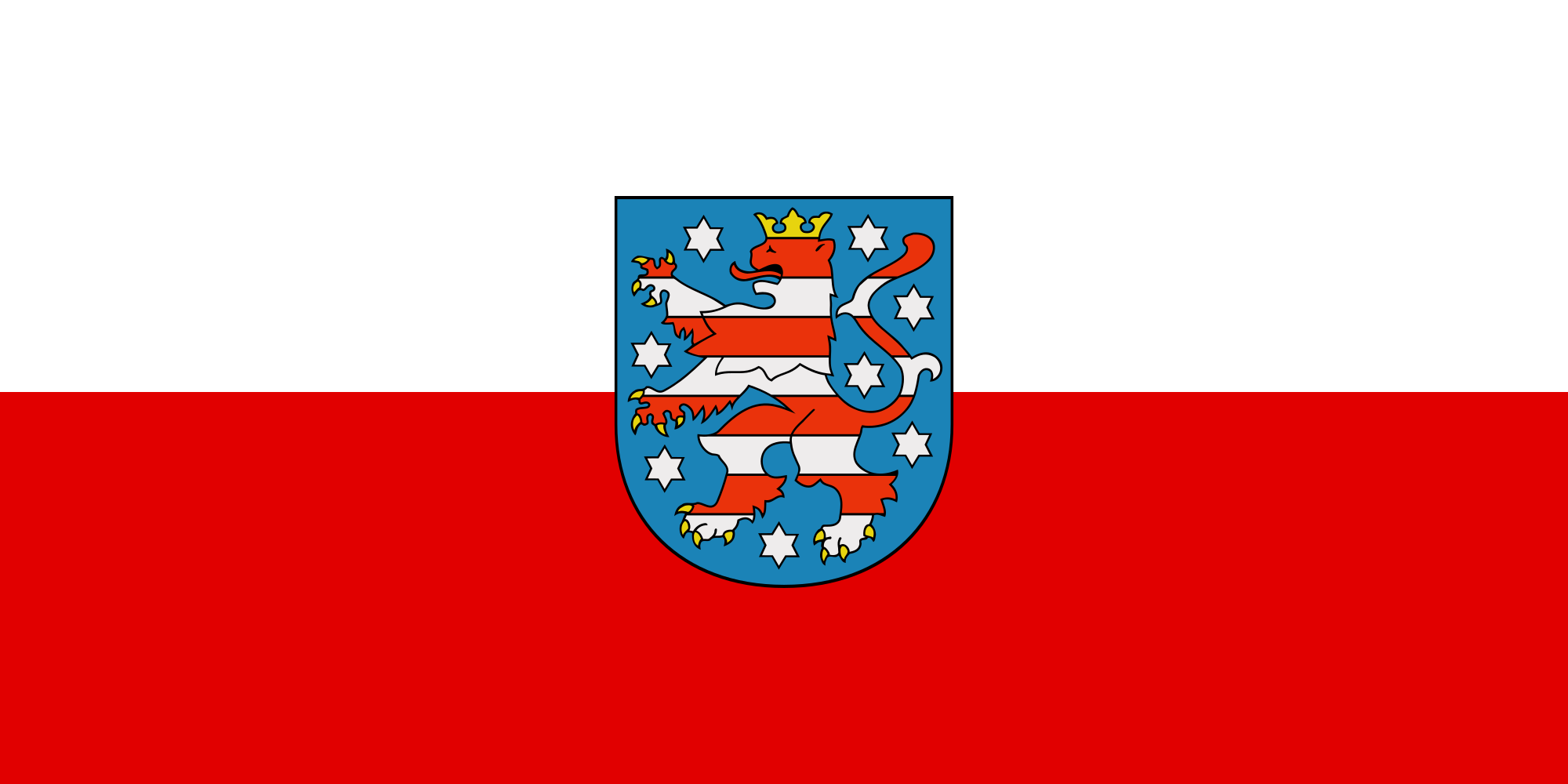 Thuringia
Thuringia

 Vacation and Travel
Vacation and Travel

 World Heritage
World Heritage

就像雅典曾是欧洲文化的心脏一样,魏玛也有过作为德国文化中心的辉煌时代。两位文坛巨擘歌德和席勒曾在这里创作出不朽的文学作品,李斯特等世界闻名的 艺术家也曾在这里生活。魏玛代表着古典文化的传统,被人们赞誉为德国的雅典。魏玛位于图林根州府以东20公里,人口6万,是座风景优美、古色古香的城市。 它依偎在埃特斯山的怀抱中,清澈的伊尔姆河水从身边静静的流过,掩映在树木花丛中的中世纪建筑物,以及富有田园诗风味的公园,还有矗立在公园和街头的雕 像,都给魏玛增添了无穷的魅力。丹麦童话作家安徒生曾说过,魏玛不是一座有公园的城市,而一座有城市的公园。 当然,魏玛的魅力更在于它的悠久历史和文化传统。公元975年,皇帝奥托二世在这里大会诸侯,使这座千年古城首次载入史册。从1547年起,魏玛成为萨克 森-魏玛公国(后为大公国)的京城。城里的故宫和郊区的贝尔维德雷宫及梯夫特宫就是当年留下的宫邸。这个诸侯国小国寡民,无力争雄,于是历代邦君都把注意 力集中在文化艺术方面。公爵卡尔·奥古斯特(1758-1828)特意邀请在文坛初露才华的歌德来担任大臣。1775年年仅26岁的歌德来到魏玛,在这里 一直生活到1832年逝世。他的非凡才华,为魏玛开创了第一个文化上的黄金时代。歌德不少千古传世的作品都是在这里创作的,他的巨著《浮士德》也完成于魏 玛。诗人和剧作家席勒也两度在魏玛生活,并在这里写了剧本《威廉·退尔》。此剧歌颂了瑞士传奇式的自由英雄,鼓舞了人民反抗专制的斗争意志。然而受到奥古 斯特公爵资助的不仅有歌德和席勒。
魏玛(德语:Weimar)位于德国中部的联邦州图林根,埃特斯山的山脚,伊尔姆河的河畔。德国历史上第一个统一共和国——魏玛共和国和历史上第一部民主宪法正是在这里诞生。这里是现代设计——包豪斯的发源地,对世界艺术与设计的发展有着巨大的贡献。虽然它仅有6万人口,但却是一座风景优美、古色古香充满着文化气息的都市。这里有着各种各样的博物馆,在宫殿博物馆和市立博物馆里有很多国家收藏的艺术品。在德国的国家大剧院前面有著名雕刻家恩斯特·里彻尔所创作的歌德和席勒纪念雕像。1998年,“古典魏玛”(Classical Weimar)被列为世界文化遗产。
Weimar ist eine kreisfreie Stadt in Thüringen in Deutschland, die vor allem für ihr kulturelles Erbe bekannt ist. Weimar liegt an einem Bogen der Ilm südöstlich des Ettersberges, des mit 478 Metern höchsten Berges im Thüringer Becken. Die Stadt ist nach Erfurt, Jena und Gera die viertgrößte Thüringens und liegt etwa auf halbem Wege zwischen Erfurt im Westen und Jena im Osten.
Weimar ist ein Mittelzentrum, das zum Teil Funktionen eines Oberzentrums erfüllt und seit 2004 offiziell als Universitätsstadt bezeichnet wird. Neben der Bauhaus-Universität beherbergt die Stadt die Hochschule für Musik Franz Liszt und die Herzogin Anna Amalia Bibliothek. Außerdem haben in Weimar zahlreiche Behörden ihren Sitz, zum Beispiel das Thüringer Oberverwaltungsgericht, das Thüringer Landesverwaltungsamt, der Thüringer Verfassungsgerichtshof und das Thüringische Landesamt für Denkmalpflege und Archäologie.
Zum kulturellen Erbe der Stadt gehören neben den Traditionen der Weimarer Klassik um Wieland, Goethe, Herder und Schiller auch das Bauhaus und die Nationalversammlung von 1919, von der sich der Name der Weimarer Republik herleitet, sowie eine Vielzahl weiterer hochrangiger kultureller Hinterlassenschaften aus dem 16. Jahrhundert (Lucas Cranach d. Ä. und d. J.), 17. Jahrhundert (Gründung der Fruchtbringenden Gesellschaft), 18. Jahrhundert (Johann Sebastian Bach), 19. Jahrhundert (genannt seien Franz Liszt, Richard Strauss, Friedrich Nietzsche, die Landschaftsmaler der Weimarer Malerschule an der Großherzoglich-Sächsischen Kunstschule Weimar) und 20. Jahrhundert (Harry Graf Kessler, Henry van de Velde). Das Bauhaus und seine Stätten in Weimar (und Dessau) wurden 1996, das „klassische Weimar“ im Dezember 1998 von der UNESCO zum Weltkulturerbe erklärt. Die zuletzt genannte Entscheidung wurde begründet mit der „großen kunsthistorischen Bedeutung öffentlicher und privater Gebäude und Parklandschaften aus der Blütezeit des klassischen Weimar.“[2] Zudem wurde der im Goethe- und Schiller-Archiv in Weimar aufbewahrte Nachlass Goethes 2001 von der UNESCO in das kulturelle Gedächtnis der Menschheit als Weltdokumentenerbe (Memory of the World) aufgenommen. Zum Weltdokumentenerbe zählen seit 2015 auch frühe Schriften der Reformation, von denen ein Teil in der Herzogin Anna Amalia Bibliothek in Weimar aufbewahrt werden. In über 25 Museen und Ausstellungsorten wird das kulturelle Erbe von nationalem und internationalem Rang präsentiert.
Weimar war seit 1547/52 Haupt- und Residenzstadt des Herzogtums Sachsen bzw. Sachsen-Weimar, später Sachsen-Weimar-Eisenach (seit 1815: Großherzogtum). Dies war der erste Staat Deutschlands, der sich eine Verfassung gab (1816). Von 1920 bis 1952 war Weimar die Hauptstadt des Landes Thüringen. 1999 war sie Kulturhauptstadt Europas.
ヴァイマル(Weimar ドイツ語発音: [ˈvaɪmaɐ])は、ドイツ・テューリンゲン州の都市で、主要な歴史的文化都市のひとつ。ワイマール、ヴァイマール、ワイマル、ヴァイマー、ワイマー、ウァイマーなどとも表記される。慣用的に「ワイマール」と表記されることが多い。
面積は84,27 km2、人口は約64,000人。主な宗教はキリスト教プロテスタントルター派。1999年には欧州文化首都に選ばれている。
Weimar (German pronunciation: [ˈvaɪmaɐ̯]; Latin: Vimaria or Vinaria) is a city in the federal state of Thuringia, Germany. It is located between Erfurt in the west and Jena in the east, approximately 80 kilometres (50 miles) southwest of Leipzig, 170 kilometres (106 miles) north of Nuremberg and 170 kilometres (106 miles) west of Dresden. Together with the neighbour-cities Erfurt and Jena it forms the central metropolitan area of Thuringia with approximately 500,000 inhabitants, whereas the city itself counts a population of 65,000. Weimar is well known because of its large cultural heritage and its importance in German history.
The city was a focal point of the German Enlightenment and home of the leading characters of the literary genre of Weimar Classicism, the writers Johann Wolfgang von Goethe and Friedrich Schiller. In the 19th century, famous composers like Franz Liszt made a music centre of Weimar and later, artists and architects like Henry van de Velde, Wassily Kandinsky, Paul Klee, Lyonel Feininger and Walter Gropius came to the city and founded the Bauhaus movement, the most important German design school of the interwar period. However, the political history of 20th-century Weimar was inconsistent: it was the place where Germany's first democratic constitution was signed after the First World War, giving its name to the Weimar Republic period in German politics (1918–33), as well as one of the cities mythologized by the National Socialist propaganda.
Until 1948, Weimar was the capital of Thuringia. Today, many places in the city centre have been designated as UNESCO World Heritage sites (either as part of the Weimar Classicism complex or as part of the Bauhaus complex) and tourism is one of the leading economic sectors of Weimar. Relevant institutions in Weimar are the Bauhaus University, the Liszt School of Music, the Duchess Anna Amalia Library and two leading courts of Thuringia (the Supreme Administrative Court and Constitutional Court). In 1999, Weimar was the European Capital of Culture.
Weimar est une ville d'Allemagne, traversée par l'Ilm. Elle se situe dans le land de Thuringe (en allemand Thüringen). Sa population est d'environ 65 000 habitants, ce qui en fait la quatrième ville la plus peuplée de Thuringe après Erfurt, Iéna et Gera. Ville aux nombreux monuments historiques, Weimar a été inscrit par l'UNESCO au patrimoine mondial en décembre 19981 et a été nommée capitale européenne de la culture en 1999.
Weimar, in italiano arcaico Vimaria[2], è una città extracircondariale di 65.479 abitanti[1] della Turingia, in Germania. È uno dei maggiori centri culturali della Germania e appartiene al Patrimonio dell'umanità dell'UNESCO con i siti Weimar classica e Il Bauhaus e i suoi siti a Weimar e Dessau. Nelle sue vicinanze, a circa 8 km, si trovava il campo di concentramento di Buchenwald dove, fra il 1937 e il 1943 furono uccise più di 54.000 persone. La località ospita ora un centro di memorie e di documentazione.
Il nome di Weimar è associato anche alla cosiddetta "Repubblica di Weimar", nome dato al governo della Germania nel periodo che va dal 1919 al 1933, cioè dalla fine della prima guerra mondiale alla presa del potere da parte dei nazionalsocialisti. Il nome è dovuto al fatto che il Congresso nazionale, per approvare la nuova costituzione della repubblica tedesca, si riunì proprio a Weimar, al Deutsches Nationaltheater.
Weimar es una ciudad del estado federado de Turingia en Alemania, conocida por su rico legado cultural. Está situada a orillas del río Ilm y al pie de la montaña Ettersberg al norte del bosque de Turingia. La ciudad está dividida en trece distritos.
Weimar fue el centro del movimiento Bauhaus. La obra de la Bauhaus en Weimar y en Dessau fueron nombradas Patrimonio de la Humanidad por la Unesco en 1996.1
El conjunto de las edificaciones conocidas como Weimar clásico fueron declaradas Patrimonio de la Humanidad por la Unesco en 1998, destacando la alta calidad artística tanto de los edificios como de los parques públicos y privados en la ciudad y sus alrededores, que testimonian el notable florecimiento cultural del periodo clásico en Weimar.2 El mecenazgo de los duques de Sajonia-Weimar-Eisenach atrajo a muchos destacados escritores y eruditos de Alemania, haciendo de Weimar el principal centro cultural europeo de la época.
La ciudad fue seleccionada Capital Europea de la Cultura en 1999.
Ве́ймар, Ва́ймар (нем. Weimar, произ.:[ˈvaɪmaɐ̯]) — город окружного подчинения в Германии, в федеральной земле Тюрингия. Население — 65,2 тыс. человек (2010).
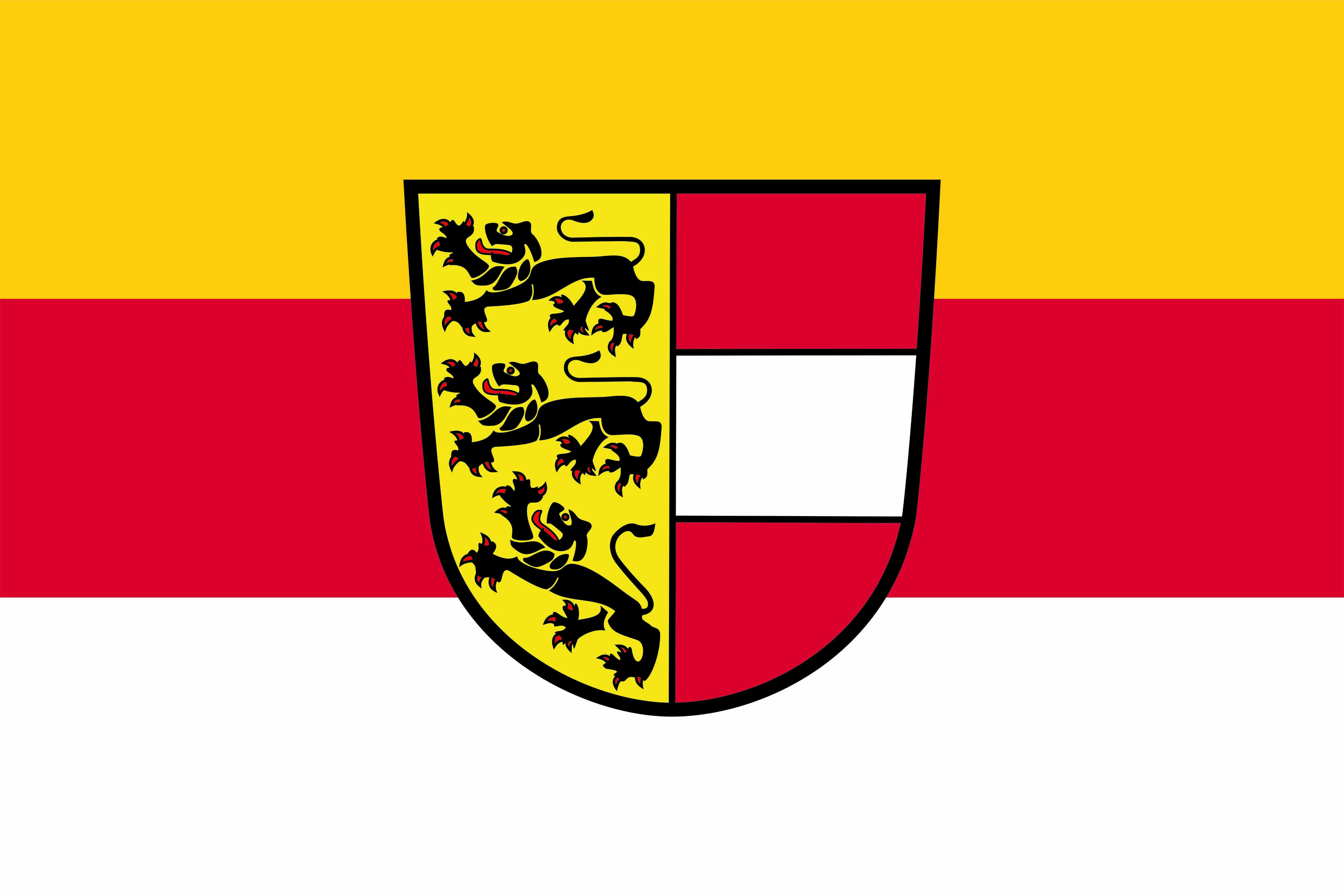 Carinthia
Carinthia
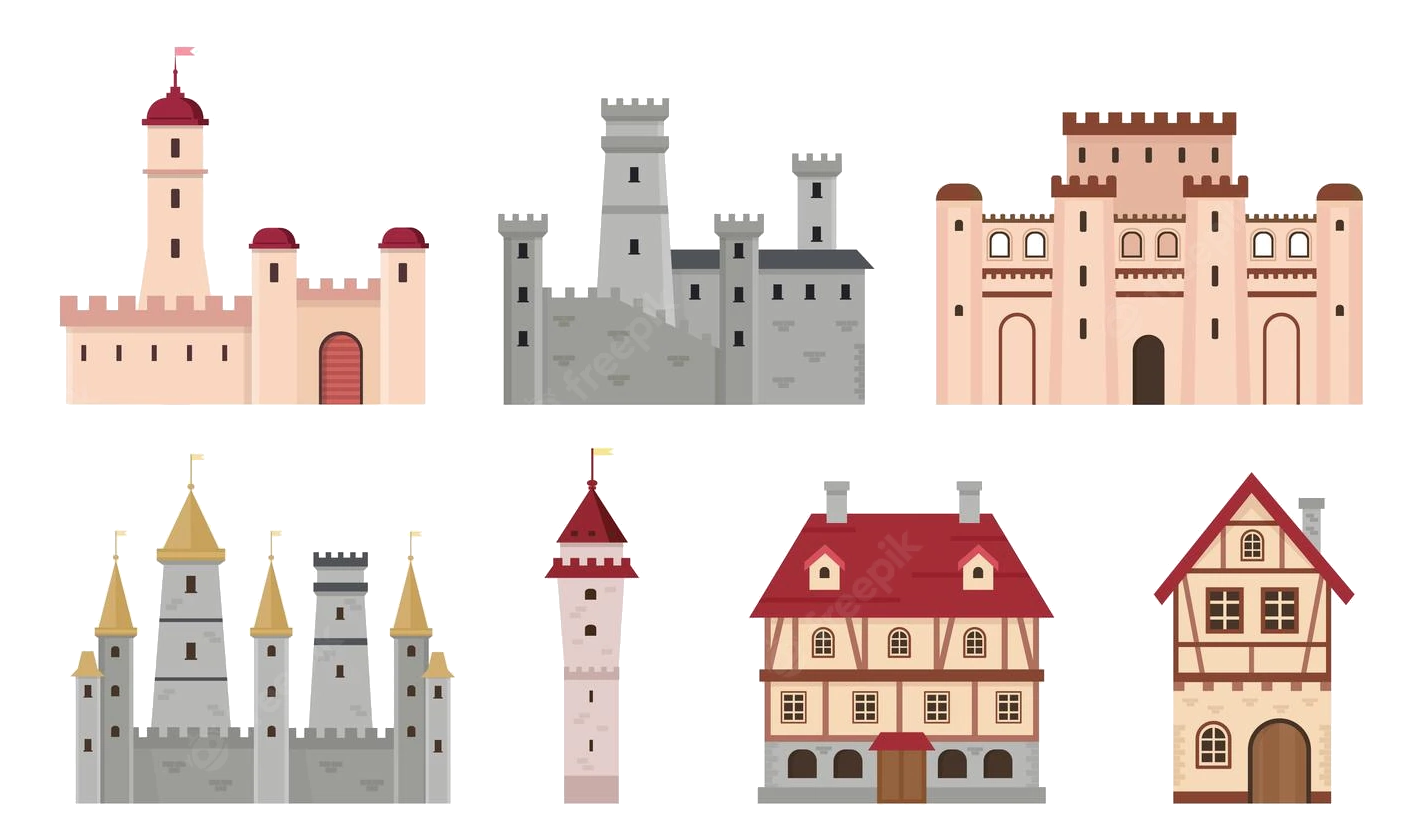 Medieval cities in Europe
Medieval cities in Europe
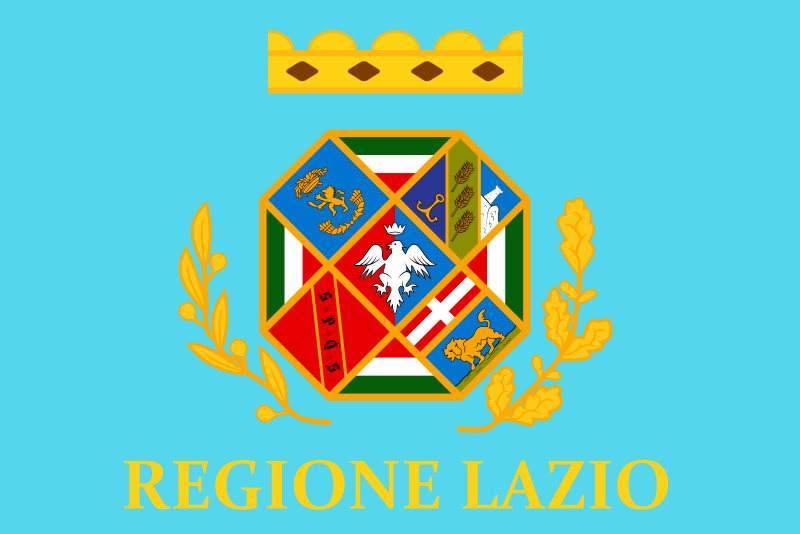 Lazio
Lazio
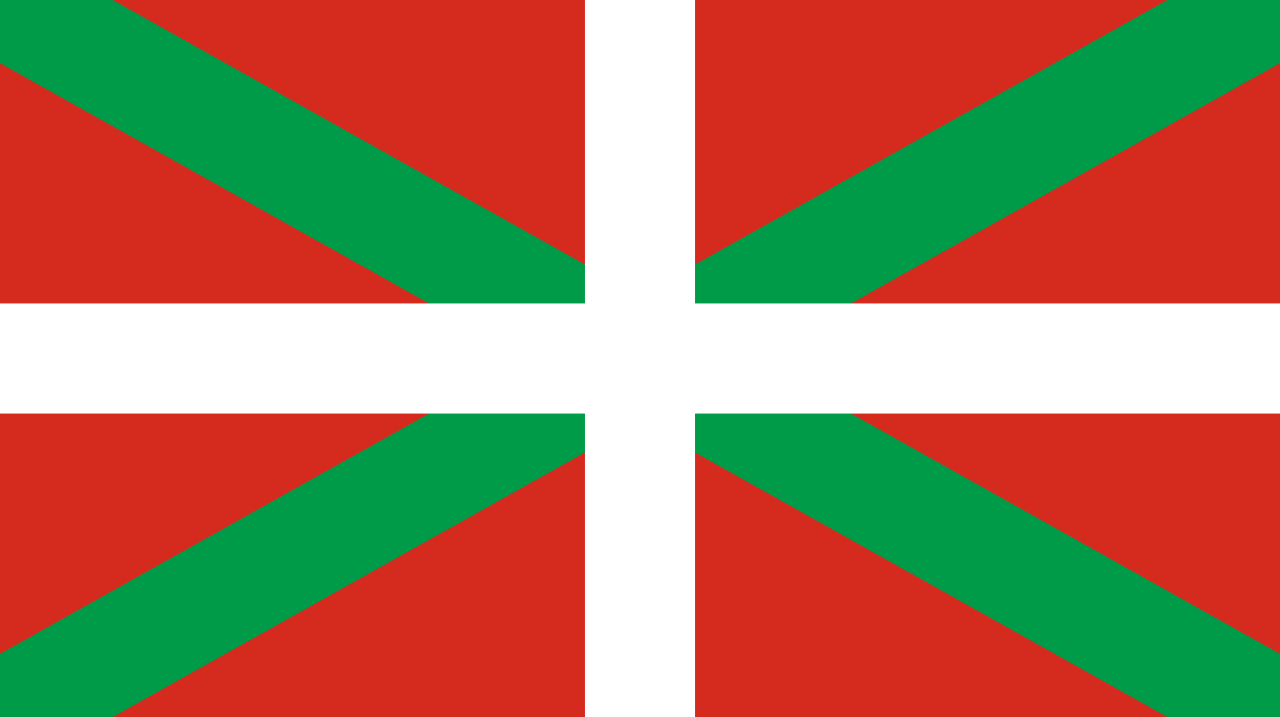 Comunidad Autónoma del País Vasco
Comunidad Autónoma del País Vasco
 Bretagne
Bretagne
 History
History
